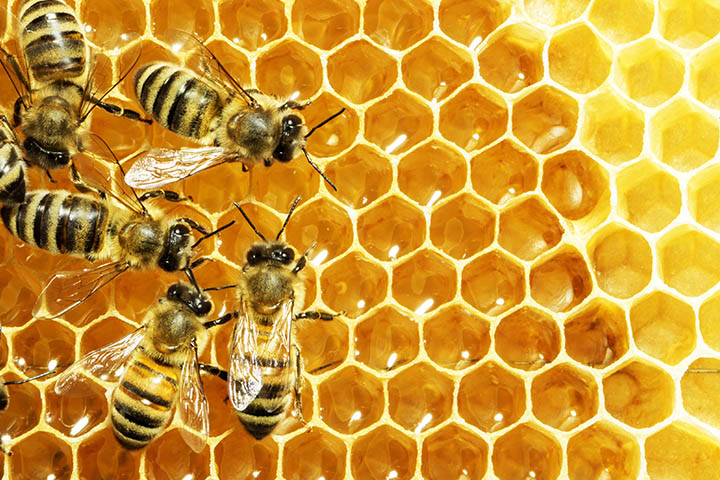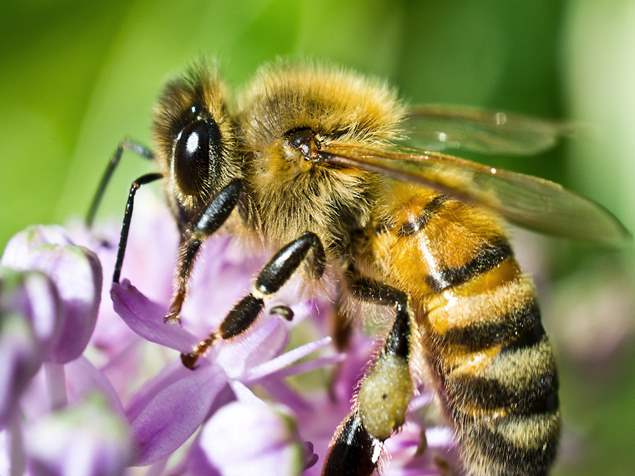How Do Bees Make Honey?

Bugs and insects are known for lots of different things. Spiders are known for spinning webs, ants are known for “marching” one by one, termites are known for eating wood and bees are known for making sweet and delicious honey. Have you ever wondered how bees make honey though?
Although there are about 20,000 different species of bees in the world, only the honeybee makes the kind of honey we are used to eating. These bees produce honey to feed themselves, which makes them different from creatures that eat things like fruits, nuts and other insects. Honeybees make honey as a way of storing and saving food for colder months when they are not able to leave their hive as often and there are not as many flowers to gather food from.
You might be wondering, if honeybees make honey to feed themselves, is it ok for humans to take it and eat it, too? The answer is yes, since these bees actually make about two to three times more honey each year than they need to survive the winter.
Honeybees live together in colonies which can consist of around 60,000 bees. In fact, a single honeybee will only create about 1/12 of a teaspoon of honey it its entire life! That is not even enough to sweeten a cup of tea!
Bee Honey Making Process: Step-by-Step
When the weather gets warmer and flowers start to bloom, honeybees will leave their hives in search of flowers. The actual process for making honey goes like this:
- Once they find a flower, they will use their long tongue like a straw to suck nectar, a sugary juice, out of the plant.
- The nectar is stored in a second stomach, also known as the “honey stomach.”
- After they have filled up their second stomach, the bees will return to their hive and start to pass the nectar through their mouths to other bees.
- These bees will chew on the nectar for about 30 minutes.
- Then they pass it along to another bee!
- As the nectar is passed from bee to bee, it is turned into honey.
- Once the nectar becomes honey, the honeybees will store it in honeycomb cells, which act as little jars made of wax.
- The bees then flap their wings over the honey to make it thicker and more like syrup instead of sweet juice.
- Once the honey is ready, the bees will seal the cell using a wax lid to store it for later.
- At this point, skilled beekeepers can take some of the finished honey from the hive, taking care to not harm or damage the colony.
Honeybees create delicious honey and help pollinate flowers to keep them alive. And while it’s interesting to see how bees make honey, they can also sting if they feel threatened. If you see a honeybee or hive, it is important to observe it from a safe distance and with help from a grown-up, like a parent or teacher.



